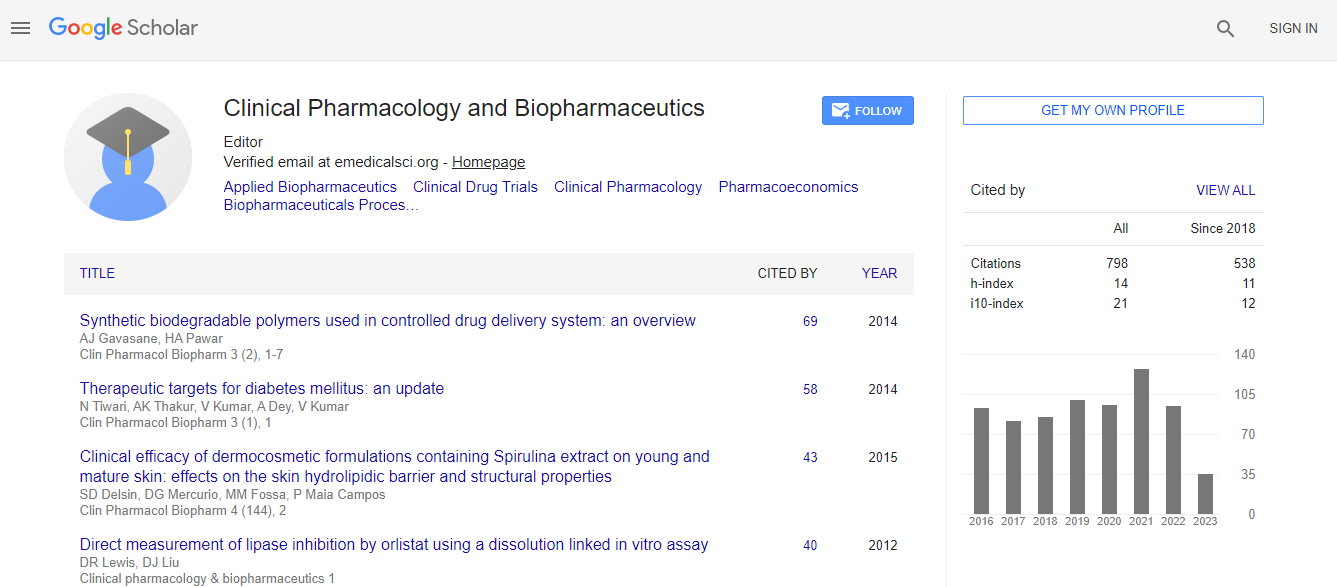3D-Printed Sublingual Tablets for Rapid Drug Absorption: Design, Formulation, and Patient Compliance
*Corresponding Author: Sadikalmahdi Afinjuomo, College of Health Sciences, Addis Ababa University, Ethiopia, Email: sadikalmahdi2001@gmal.comReceived Date: Nov 01, 2024 / Published Date: Nov 29, 2024
Citation: Sadikalmahdi A (2024) 3D-Printed Sublingual Tablets for Rapid Drug Absorption: Design, Formulation, and Patient Compliance Clin Pharmacol Biopharm, 13: 517.
Copyright: © 2024 Sadikalmahdi A. This is an open-access article distributed under the terms of the Creative Commons Attribution License, which permits unrestricted use, distribution, and reproduction in any medium, provided the original author and source are credited.
Abstract
The study explores the development of 3D-printed sublingual tablets aimed at enhancing rapid drug absorption and improving patient compliance. Using additive manufacturing techniques, the tablets were designed with optimized porosity, surface area, and dissolution properties for quick disintegration and effective drug release. Formulation strategies focused on incorporating bioadhesive and disintegrant polymers to ensure efficient drug delivery through the sublingual mucosa. The study also addressed patient-centric considerations, such as ease of administration and customization of dosage forms for pediatric and geriatric populations. Results demonstrated that the 3D-printed tablets exhibited superior performance compared to conventional sublingual formulations, offering a promising solution for conditions requiring rapid onset of action. This innovative approach highlights the potential of 3D printing in personalized medicine and pharmaceutical advancements

 Spanish
Spanish  Chinese
Chinese  Russian
Russian  German
German  French
French  Japanese
Japanese  Portuguese
Portuguese  Hindi
Hindi 
